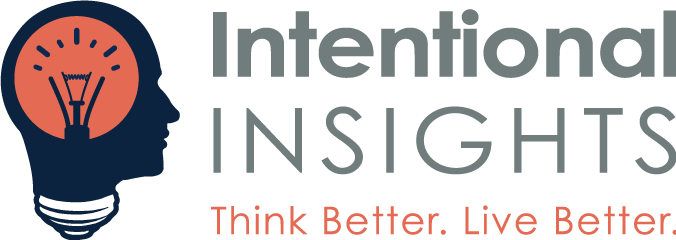
Why is it that despite advances in technology, the trust gap in remote work remains a challenging puzzle for many companies? In a candid conversation with Mike Nash, Founder & CEO of Trelliswork, we delved into this very question. Trelliswork, a Seattle-based company, helps companies run their business operating system, streamlining decision making, alignment, and accountability in today’s hybrid and remote workplace. This mission is critical in today’s business landscape, where in-office presence is no longer a realistic measure of productivity and outcomes..
The Transparency Gap and Trust Issues
Nash highlighted two core challenges in remote work: the transparency gap and trust issues. His insight into the transparency gap reveals a deeper issue in remote work. Leadership teams, accustomed to traditional office environments, often equate visibility with productivity. This mindset overlooks the reality that many tasks are completed effectively outside the purview of a physical office space. In a remote setting, where work becomes invisible in a physical sense, leaders may struggle to gauge productivity accurately. This misalignment can lead to a culture of mistrust, where leaders may unconsciously favor those they can see, leading to a skewed perception of employee contribution and value.
The trust issue is exacerbated when companies, uncertain about the efficacy of remote work, mandate returns to the office. Such decisions can signal a fundamental lack of trust in employees’ ability to work autonomously. This not only demotivates employees who have adapted to and perhaps thrived in a remote setting, but it also undermines the potential benefits of remote work, such as improved work-life balance, reduced commute times, and increased focus and productivity.
The second challenge Nash outlines is the often underappreciated need for structure in remote work environments. The misconception that remote work equates to a fully asynchronous work model can lead to disorganization and a lack of cohesion within teams. In practice, the blend of synchronous (real-time interactions) and asynchronous (task-based, non-real-time interactions) work is essential.
In remote settings, the absence of a physical office environment removes the natural rhythm and routine of the workday. Without this, teams can struggle to find a cadence that suits all members. Regularly scheduled one-on-ones and team meetings become crucial, not only for maintaining workflow but also for nurturing team dynamics and culture. These interactions must be more than perfunctory check-ins; they need to be intentional spaces for alignment, feedback, and collaborative problem-solving.
Moreover, the lack of structure in remote work can place additional stress on managers. In the absence of clear guidelines or established remote work practices, managers are often left to devise their own strategies for team coordination and communication. This can lead to inconsistencies in management styles and expectations across the organization, further complicating the remote work experience.
Addressing these challenges requires a shift in perspective at all levels of an organization. For leadership, it means redefining productivity and success beyond the traditional metrics of office attendance and visible activity. For managers, it involves developing new skills and strategies to lead remote teams effectively, which includes fostering trust through transparency, regular communication, and recognition of individual and team achievements. Companies must also invest in creating structured frameworks for remote work that balance synchronous and asynchronous activities, ensuring that teams remain cohesive and aligned regardless of their physical location. By tackling these challenges head-on, organizations can not only bridge the trust gap but also unlock the full potential of a remote or hybrid workforce.
Reflecting on my own experiences consulting for over two dozen companies in helping them figure out their hybrid work models, I’ve observed that linking trust and structure in remote work can significantly bridge the transparency gap. Regular one-on-ones, where managers and team members set and review goals, not only enhance performance management but also foster a deeper sense of trust and alignment. This approach turns routine meetings into strategic sessions, focusing on both individual and collective progress.
Facilitating Innovation in a Remote Setting
In our discussion, Nash emphasized how the factory worker model, with its emphasis on repetitive, standardized tasks, is a poor fit for the realm of knowledge work. Knowledge workers, whose roles are more cerebral and less mechanical, engage in tasks that demand creativity, critical thinking, and innovation. These tasks defy the traditional boundaries of structured work hours and environments. They are not tasks that can be easily quantified or replicated by AI, which excels in routine and predictable scenarios. In knowledge work, the value lies in the ability to think outside the box, solve complex problems, and generate new ideas.
This shift necessitates a reevaluation of how productivity and efficiency are measured. In a remote or hybrid environment, the focus should be on the outcomes and the quality of work produced, rather than the time spent or the visibility of the employee during the work process. Autonomy plays a crucial role in this setting. Granting autonomy to employees, trusting them to manage their time and workload, and providing them with the freedom to explore creative solutions can lead to remarkable spikes in innovation and productivity.
The Future of Remote Work: Integrated Tools and Collaboration
Looking to the future, Nash’s optimism about remote and flexible work is rooted in the evolution of the tools to design, build, and run a modern business operating system. . He envisions a landscape where these tools are more than just digital substitutes for in-person interactions; they are platforms that enhance and streamline work in today’s workplace. These tools would integrate various aspects of remote work, including team management, project coordination, and information sharing, into a cohesive and user-friendly system.
The goal is to develop tools that not only provide structure and process, but also actively foster collaboration and trust among team members. This means going beyond basic communication tools to create systems that encourage and facilitate creative collaboration, information sharing, and team cohesion. The effectiveness of remote work hinges on the ability of teams to collaborate effectively, regardless of physical location.
This vision dovetails with a broader trend in the business world. Organizations are increasingly recognizing that the playbook for remote and hybrid work needs to be rewritten. This new playbook calls for practices that are specifically tailored to the nuances of remote work, including structured collaboration, clear communication channels, and tools that support both synchronous and asynchronous work. The future of work is not about transplanting office culture to a digital space, but rather about creating a new culture that leverages the unique advantages of remote and hybrid models to foster innovation, efficiency, and job satisfaction.
Conclusion
As we navigate the complexities of remote work, it’s clear that trust and structure are the twin pillars supporting this new work paradigm. By embracing innovative tools and fostering a culture of transparency and autonomy, organizations can bridge the trust gap and unlock the full potential of their remote teams. The future of work is not just about adapting to change; it’s about leading the charge in creating dynamic, trust-filled, and productive work environments, no matter where we are located.
Key Take-Away
By embracing innovative tools, transparent practices, and autonomy, organizations can overcome the trust gap and create dynamic, productive work environments for remote teams...>Click to tweet
Image credit: Gustavo Fring/pexels
Originally published in Disaster Avoidance Experts




